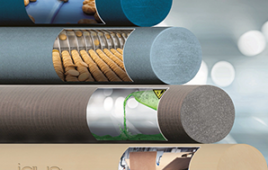Military platforms—such as ships, aircraft and ground vehicles—rely on advanced materials to make them lighter, stronger and more resistant to stress, heat and other harsh environmental conditions. Currently, the process for developing new materials to field in platforms frequently takes more than a decade. This lengthy process often means that developers of new military platforms are forced to rely on decades-old, mature materials because potentially more advanced materials are still being tested and aren’t ready to be implemented into platform designs.
DARPA’s Materials Development for Platforms (MDP) program seeks to address this problem by developing a methodology and toolset to compress the applied material development process by at least 75 percent: from an average of 10 years or longer to just two and a half years. To achieve this goal, the program intends to establish a cross-disciplinary model that incorporates materials science and engineering, Integrated Computational Materials Engineering (ICME) principles and the platform development disciplines of engineering, design, analysis and manufacturing. The program plans to focus on the rapid development of materials with specific platform capabilities and intended missions in view, rather than supporting long-term, generalized materials development acceleration followed by an assessment of potential applications for the resulting materials.
“In this program, we want to move from the current mindset of sporadic ‘pushes’ in materials technology development to a mindset that ‘pulls’ materials technology forward driven by platform design intent and mission need,” said Mick Maher, DARPA program manager. “Ideally, we could envision materials development happening on time scales more in line with modern commercial automobile development.”
As a test case for this new development concept, the program intends to focus its initial efforts on a hypersonic platform design—a bold and pressing challenge, since hypersonic vehicles operate under extreme conditions that push state-of-the-art materials to their thermal, chemical and structural limits. Specifically, the initial MDP materials development effort would be applied to the design of an outer aerodynamic shell for a hypersonic vehicle that would glide through the atmosphere. Hypersonic air vehicles travel at more than five times the speed of sound, resulting in shell temperatures of several thousand degrees Fahrenheit—hot enough to melt steel. The goal is to prove the MDP concept by developing, manufacturing and independently testing various new material structural elements of an outer shell within two and a half years.
“A key to the program’s success will be integrating expertise from a wide range of relevant technical disciplines,” Maher said. “We want to reach out to potential performers in all of the relevant scientific and engineering communities—and from both large companies and small businesses—so they can team together to create the most effective solutions possible.”
Filed Under: Materials • advanced




